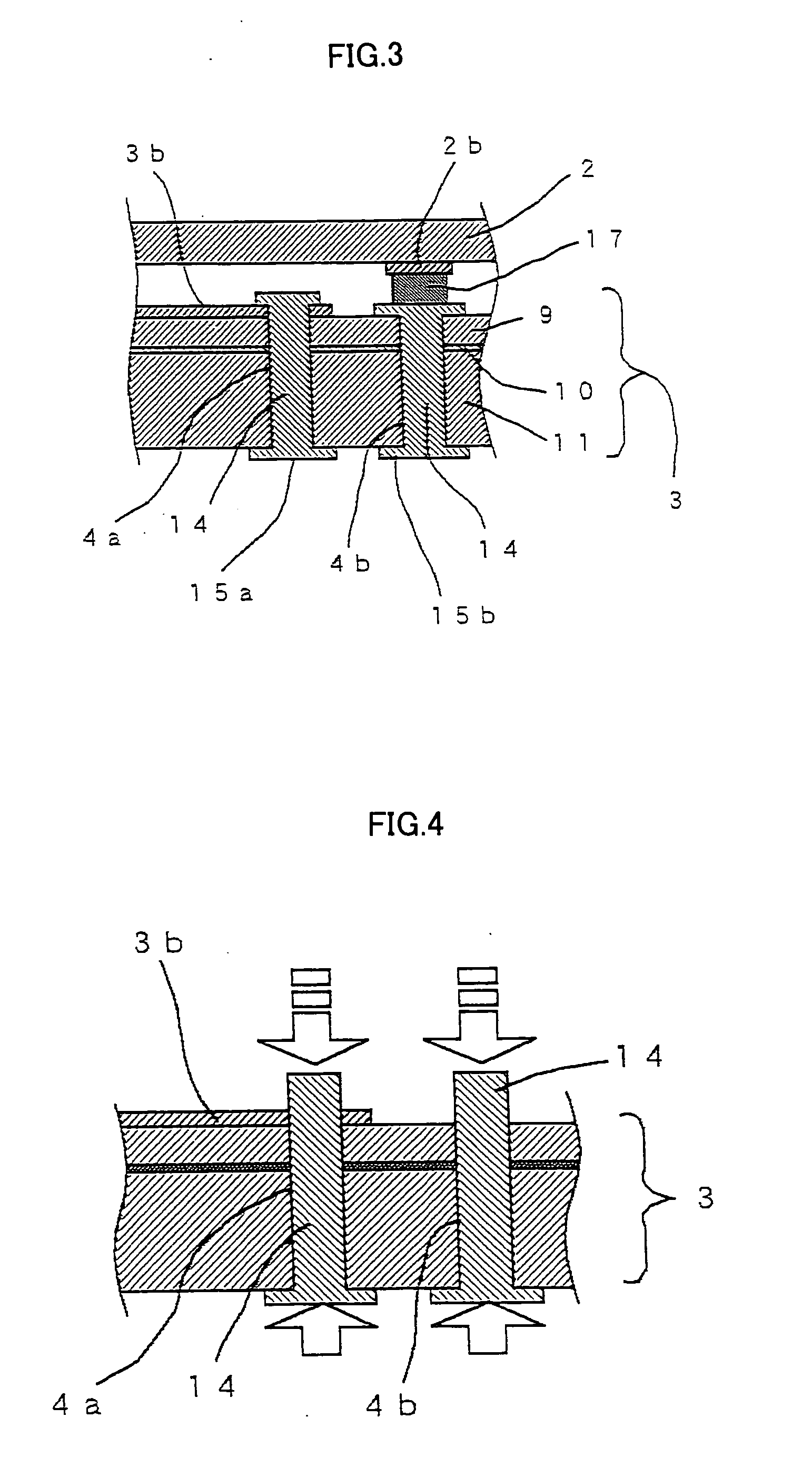Touch Panel And Protective Panel For Display Window Of Electronic Device Using The Same
a technology of electronic devices and protective panels, which is applied in the direction of electrical connection formation of printed elements, emergency connections, instruments, etc., can solve the problems of difficult to say that the electrodes themselves have high strength, conductor wires are broken at the connecting parts, and touch panels may need to be replaced with new ones, etc., to achieve stable contact resistance, easy mounting of touch panels and electrical connection of touch panels to interfaces, and easy operation. convenient and convenient
- Summary
- Abstract
- Description
- Claims
- Application Information
AI Technical Summary
Benefits of technology
Problems solved by technology
Method used
Image
Examples
first embodiment
[0050]FIG. 1 illustrates a first embodiment of a touch panel according to the present invention.
[0051] It is noted that a method for assembling the touch panel of the present invention is the same as a conventional method shown in FIG. 11, and therefore a touch panel 1 will be first described with reference to FIG. 11.
[0052] As illustrated in FIG. 11, a resistive film 2a is formed by applying ITO or the like onto the lower surface of a touch side substrate 2 by way of sputtering or vacuum deposition. Also, on the upper surface of a non-touch side substrate 3, a rectangular resistive film 3a is formed in the same manner.
[0053] At the periphery of the non-touch side substrate 3, through-holes 4a, 4b, 4c, and 4d for constituting a connecting part 5 are formed to provide a touch panel in which an FPC (not shown in the drawing) is not directly drawn out from the side face thereof.
[0054] The touch panel 1 of the present invention having such a structure described above is characterize...
second embodiment
[0081]FIG. 3 illustrates a second embodiment of the touch panel according to the present invention.
[0082] The touch panel shown in FIG. 3 is characterized in that the rivet 14 provided in each of the through-holes 4a and 4b has heads at both ends of a shaft thereof. More specifically, after the rivet 14 having a head is inserted into each of the through-holes 4a and 4b for constituting the connecting part 5, the tip of a shaft of the rivet 14 also be formed into a head. One of the heads of the rivet 14 provided on the lower surface of the non-touch side substrate 3 forms the flat connecting electrode 15a or 15b for connection to an external terminal, and the other head of the rivet 14 is directly electrically connected to the electrode 2b or 3b of the resistive film 2a or 3a without through the communicating electrode 18. It is noted that the through-holes 4c and 4d are the same as the through-holes 4a and 4b, and are therefore omitted from FIG. 3.
[0083] The rivet 14 having heads ...
third embodiment
[0087]FIG. 6 illustrates a third embodiment of the touch panel according to the present invention.
[0088] The touch panel of the third embodiment shown in FIG. 6 is characterized in that a metal foil 16 is used instead of the rivet 14 to form a head. More specifically, the conductive paste 8 is injected into the through-holes 4a and 4b constituting the connecting part 5, and an opening of each of the through-holes 4a and 4b provided in the lower surface of the non-touch side substrate 3 and a periphery of the opening of the through hole are covered with a disk-like shaped metal foil 16. The metal foil 16 provided on the lower surface of the non-touch side substrate 3 forms the flat electrode 15a or 15b for connection to an external terminal. It is noted that the through-holes 4c and 4d are the same as the through-holes 4a and 4b, and are therefore omitted from FIG. 6.
[0089] Examples of a material for forming the metal foil 16 include copper, iron, nickel, and aluminum. The thicknes...
PUM
| Property | Measurement | Unit |
|---|---|---|
| thickness | aaaaa | aaaaa |
| thickness | aaaaa | aaaaa |
| diameter | aaaaa | aaaaa |
Abstract
Description
Claims
Application Information
 Login to View More
Login to View More - R&D
- Intellectual Property
- Life Sciences
- Materials
- Tech Scout
- Unparalleled Data Quality
- Higher Quality Content
- 60% Fewer Hallucinations
Browse by: Latest US Patents, China's latest patents, Technical Efficacy Thesaurus, Application Domain, Technology Topic, Popular Technical Reports.
© 2025 PatSnap. All rights reserved.Legal|Privacy policy|Modern Slavery Act Transparency Statement|Sitemap|About US| Contact US: help@patsnap.com



